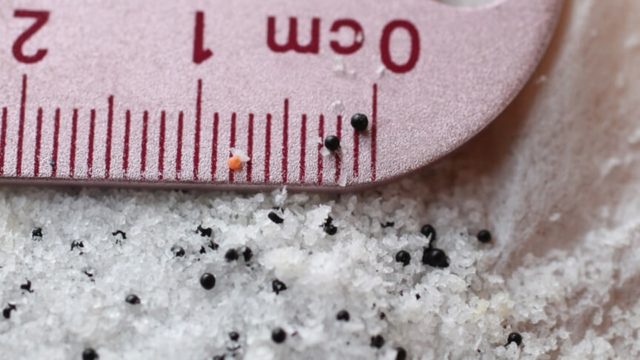Ottawa’s plan to designate the plastic pellets found in personal care products as a toxic substance is great news. But will the ban on microbeads go far enough?
Microbeads, those tiny bits of plastic that promise to help even out our complexions and polish our teeth, are clogging up our lakes, rivers and streams. In a pleasing development, the federal government has announced that it intends to classify microbeads as a toxic substance under the Canadian Environmental Protection Act and introduce regulations banning their use in personal care products.
This is great news, and a win for people and the environment. However, as always, the devil will be in the details: It still remains to be seen whether a ban will extend to all microbeads, including ones that are supposedly biodegradable.
Typically 1 millimetre or smaller in diameter, microbeads are used in personal care products such as cleansers, lotions and toothpaste. They are added to some products as an exfoliant, even though many natural exfoliants, like ground apricot kernels, oatmeal and pumice, are readily available. While microbeads were once considered innovative, they are certainly not irreplaceable and — perhaps most significantly — they are not essential enough to warrant polluting our waterways.
When products containing microbeads are used and rinsed down the drain, these bits of plastic are too small to be caught by waste water treatment facilities. Instead, they are flushed directly into our lakes, rivers and streams.
Scientists have found millions of microbeads in parts of the Great Lakes, with the highest concentrations occurring near urban areas. Studies estimate that microbeads make up 20 per cent of plastic pollution in some parts of the Great Lakes, which provide drinking water to 8.5 million Canadians.
Once they are unleashed into our waterways, microbeads can make their way up the food chain. They absorb dangerous pollutants such as PCBs and polycyclic aromatic hydrocarbons that are already present in the marine environment. When fish, birds and other wildlife ingest these plastics, the harmful pollutants accumulate in species low in the food chain and are passed onto larger predators, eventually contaminating the fish and other wildlife species consumed by humans.
State governments in the United States have already taken action to ban the bead. Last year, Illinois enacted legislative provisions that will prohibit the manufacture and sale of personal care products containing microbeads. New Jersey has recently followed suit and enacted similar legislation.
To its credit, the federal government has promised to take action on microbeads. Meanwhile, the Ontario government is poised to move on the issue as well, particularly if there is foot-dragging at the federal level once again. My hope is that any ban will also restrict so-called “biodegradable” microbeads.
This last distinction is especially important because although several companies — most recently Loblaws — have agreed to voluntarily phase microbeads out of their brand of products, some are planning to use so-called biodegradable microbeads in their place. The problem? Many of these biodegradable microbeads are still made of plastic and may pose the same risks as synthetic microbeads.
Dozens of different types of plastics have been characterized as biodegradable, but there is no reliable evidence supporting the accuracy of these claims or proof that these products are safe for the environment. There is no generally accepted standard or test among scientists for what constitutes biodegradable plastic, let alone reliable test data for performance under real-life conditions.
Some biodegradable plastics only partially degrade, leaving residual fragments to linger in the environment. Other types degrade into various components, including toxic inorganic compounds. Others still take an indeterminate amount of time to degrade in a real-life marine environment (which is often cold and offers little sunlight) and are ingested by wildlife while they are still whole, causing the same harms as synthetic microbeads.
With industry starting to come onside, the key will be for government to stop the flow of all plastic microbeads, synthetic and biodegradable, into our beautiful lakes, rivers and streams. If we are going to ban the bead, let’s make sure we get it right.
Op-ed originally featured in the August 7th, 2015 edition of the Toronto Star
Photo credit Lake Ontario Waterkeeper


